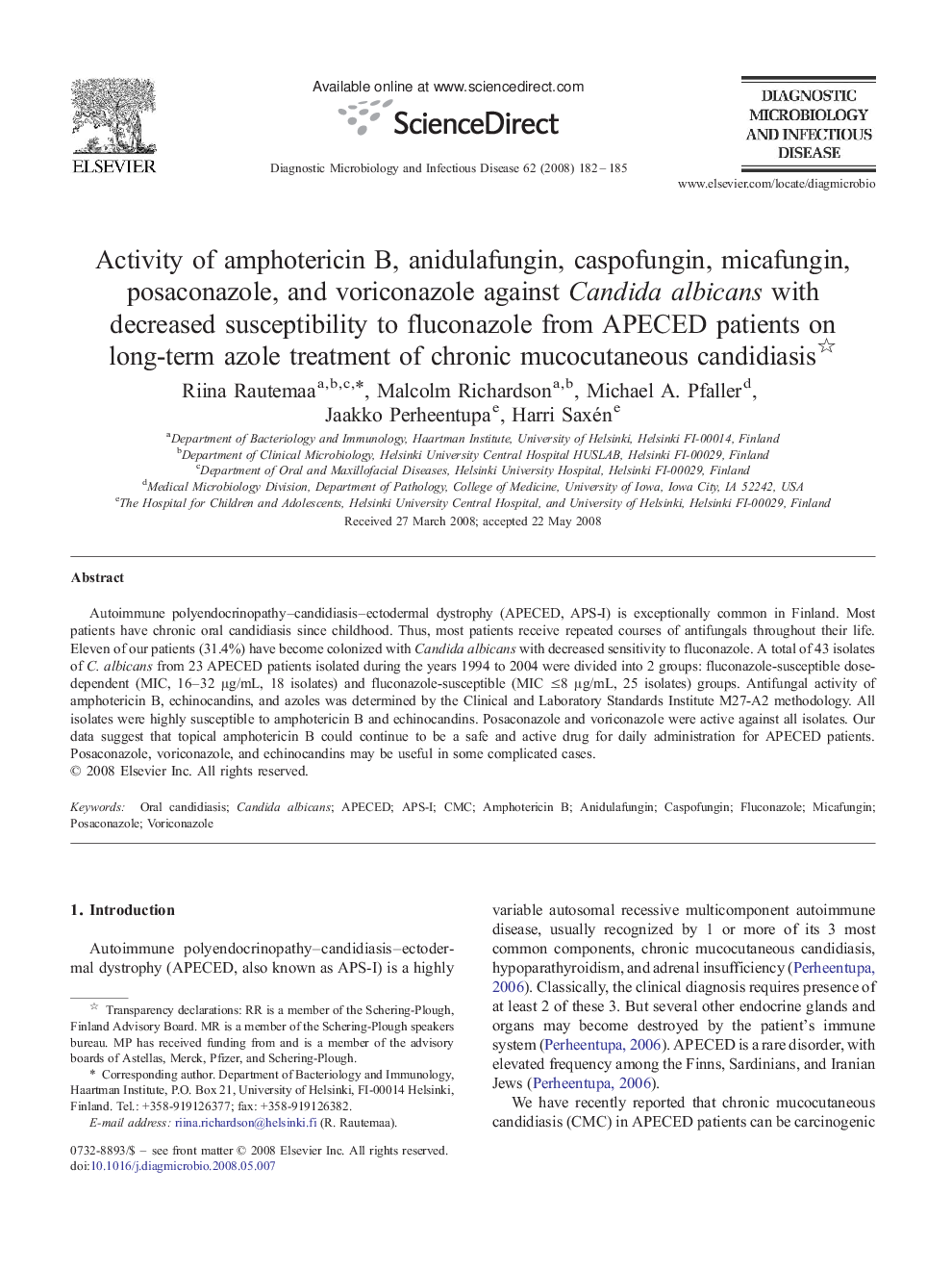| Article ID | Journal | Published Year | Pages | File Type |
|---|---|---|---|---|
| 3347838 | Diagnostic Microbiology and Infectious Disease | 2008 | 4 Pages |
Autoimmune polyendocrinopathy–candidiasis–ectodermal dystrophy (APECED, APS-I) is exceptionally common in Finland. Most patients have chronic oral candidiasis since childhood. Thus, most patients receive repeated courses of antifungals throughout their life. Eleven of our patients (31.4%) have become colonized with Candida albicans with decreased sensitivity to fluconazole. A total of 43 isolates of C. albicans from 23 APECED patients isolated during the years 1994 to 2004 were divided into 2 groups: fluconazole-susceptible dose-dependent (MIC, 16–32 μg/mL, 18 isolates) and fluconazole-susceptible (MIC ≤8 μg/mL, 25 isolates) groups. Antifungal activity of amphotericin B, echinocandins, and azoles was determined by the Clinical and Laboratory Standards Institute M27-A2 methodology. All isolates were highly susceptible to amphotericin B and echinocandins. Posaconazole and voriconazole were active against all isolates. Our data suggest that topical amphotericin B could continue to be a safe and active drug for daily administration for APECED patients. Posaconazole, voriconazole, and echinocandins may be useful in some complicated cases.
